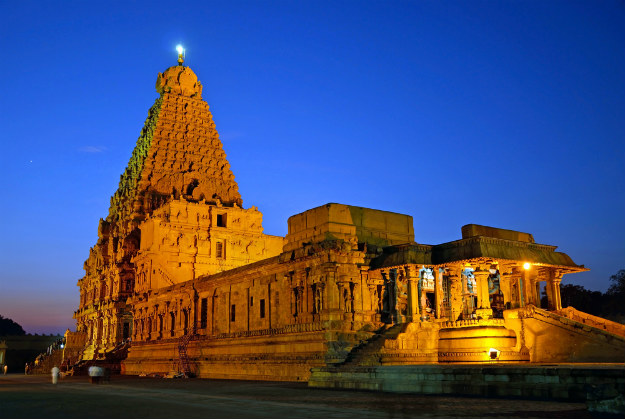The Great Living Chola Temples: A Saga of Cultural Heritage and UNESCO Recognition
In the heartland of Tamil Nadu, India, the Great Living Chola Temples stand as remarkable architectural jewels that have earned the prestigious designation of UNESCO World Heritage Sites. These temples, revered for their artistic brilliance and historical significance, offer a captivating journey into the past and reflect the grandeur of the Chola dynasty. This article delves into the historical narrative, the process leading to World Heritage status, the underlying reasons for their recognition, and the enduring impact of the Great Living Chola Temples.

A Glimpse into History:
Dating back to the 10th and 12th centuries, the Great Living Chola Temples are a triumvirate of architectural masterpieces. Comprising the Brihadeeswarar Temple in Thanjavur, the Brihadeeswarar Temple in Gangaikonda Cholapuram, and the Airavatesvara Temple in Darasuram, these temples symbolize the zenith of Chola architecture and culture.
Date of Designation:
The Great Living Chola Temples were collectively inscribed as UNESCO World Heritage Sites in 1987 and 2004. This dual recognition paid homage to their historical, artistic, and cultural importance, ensuring their preservation for posterity.
Reasons Behind their Designation:
The inclusion of the Great Living Chola Temples in the UNESCO World Heritage List is attributed to several compelling reasons:
- Architectural Grandeur: These temples epitomize the Chola dynasty’s architectural ingenuity. Elaborate sculptures, towering vimanas, and intricately adorned gopurams are testimony to the exceptional craftsmanship of the era.
- Cultural Legacy: The temples are living repositories of Chola culture, spirituality, and artistic expression. Inscriptions within their walls provide invaluable insights into the society, governance, and religious practices of the time.
- Engineering Marvels: The Brihadeeswarar Temple in Thanjavur is renowned for its engineering marvels, including a monolithic cupola that remains an awe-inspiring testament to the Chola’s engineering prowess.
- Interfaith Harmony: The temples embrace a harmonious blend of Hindu, Buddhist, and Jain influences, underlining the dynasty’s all-encompassing approach to spirituality and religious tolerance.
Impact of World Heritage Status:
The UNESCO World Heritage recognition has yielded profound impacts on the Great Living Chola Temples and their surroundings:
- Conservation and Restoration: The temples’ designation has spurred heightened efforts in conservation and restoration. Preservation projects ensure that these architectural treasures endure for future generations.
- Cultural Tourism: The UNESCO status has attracted tourists from across the globe, enriching the local economy and fostering cross-cultural interaction and understanding.
- Cultural Awareness: The recognition fosters global awareness about the cultural and historical significance of the Chola dynasty, shedding light on India’s rich heritage and architectural excellence.
Conclusion:
The journey of the Great Living Chola Temples from architectural marvels to UNESCO World Heritage Sites is a tribute to their timeless significance. These temples embody the creative genius, spiritual devotion, and cultural richness of the Chola dynasty. As they continue to stand tall, they beckon us to explore and appreciate the remarkable achievements, profound spirituality, and societal values of a bygone era. Preserving and cherishing such sites ensures that they remain a source of inspiration and wonder for generations to come.




